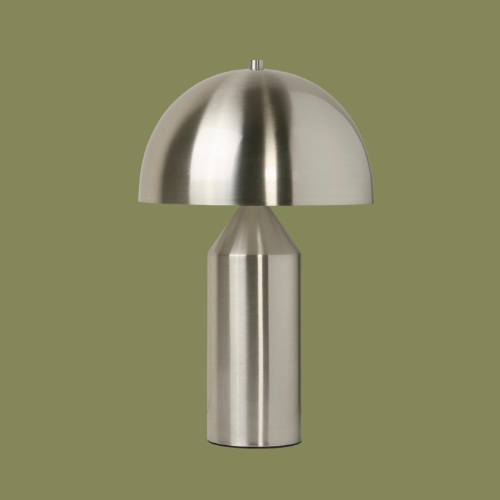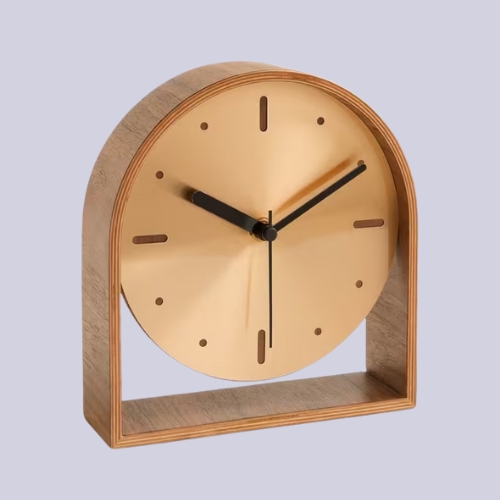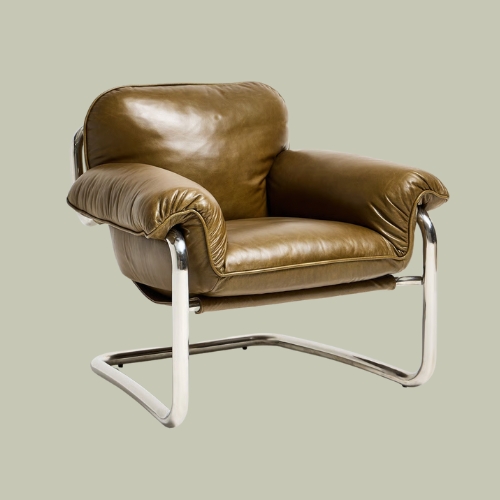I Think This 1930s Trend Is One of the Biggest Influences on Contemporary Design Behind the Scenes — Meet 'Streamline Moderne'
From chrome curves to porthole windows, every detail has a "clean, almost nautical quality to it"
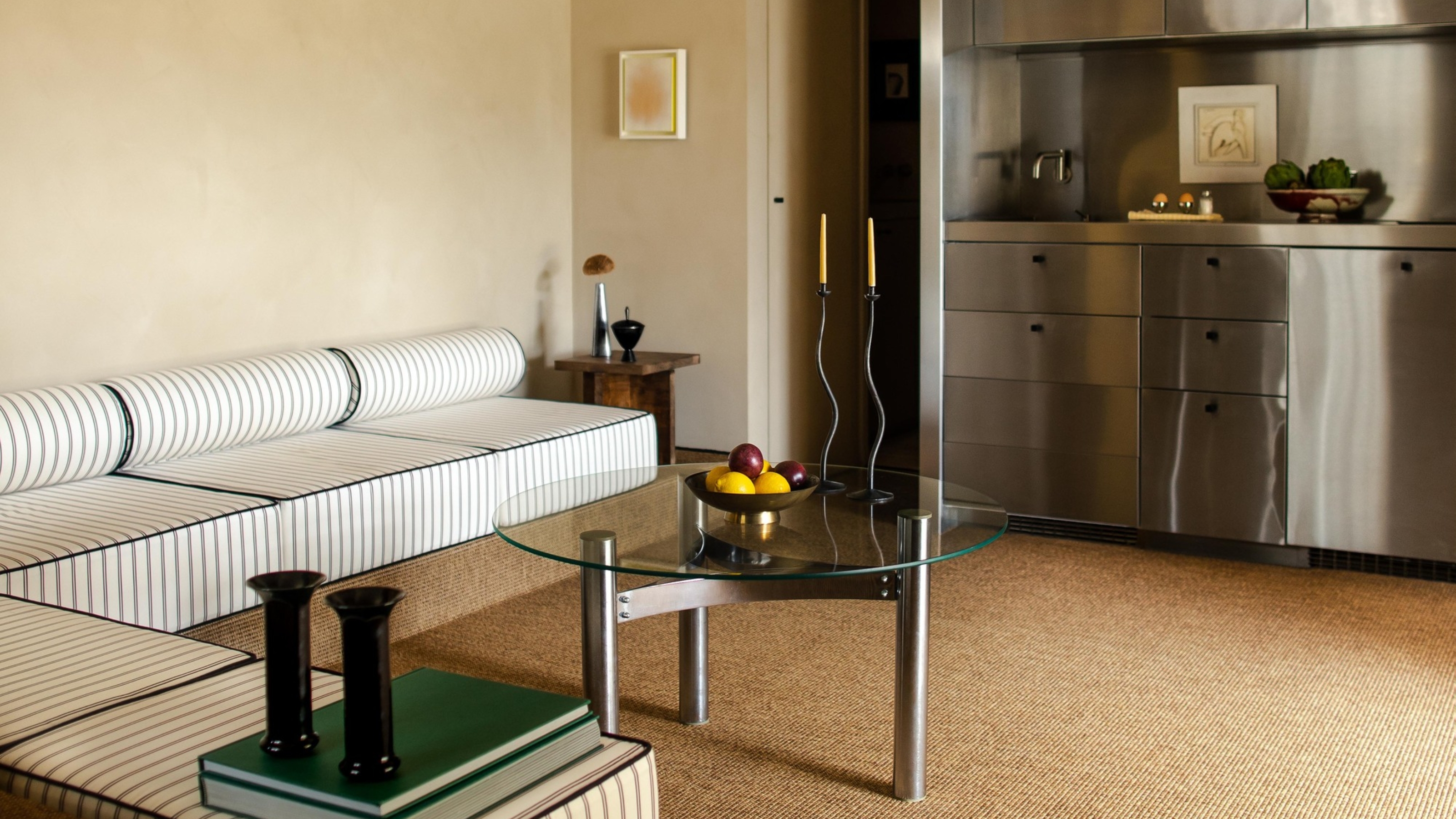

Over the past year, trends have converged at a crossroad between nostalgic design and otherworldly futurism — a blend of familiar, character-rich environments and sleek, modern finishes. We've seen this materialize in trends like chrome accents, colorful carpeting, curved motifs, and a lasting appreciation for functional vintage design. For a while, I struggled to come up with a quippy way to describe the style, but then I discovered Streamline Moderne.
The Streamline Moderne aesthetic first emerged in the 1930s as a sleeker, more... well, streamlined offshoot of Art Deco interior design. While Art Deco was all about glamour and ornate decoration, Streamline Moderne stripped things down. "The style was inspired by the aerodynamic designs of trains, planes, and ships — think of those beautiful old ocean liners with their curved hulls and horizontal lines," explains Marianne Jones, a California-based interior designer. It was about movement, speed, and a focus on the future.
Today's resurgence makes sense; we're craving simplicity and timelessness in our homes, without compromising character. And Streamline Moderne isn't about chasing interior design trends — it's centered around form, function, and quality. "Those curved lines feel human and approachable in a way that's really appealing right now," adds Marianne. And in 2025, there is, of course, a little more edge to this aesthetic. Here's how we're seeing it manifest in today's interiors.
The History of Streamline Moderne Style
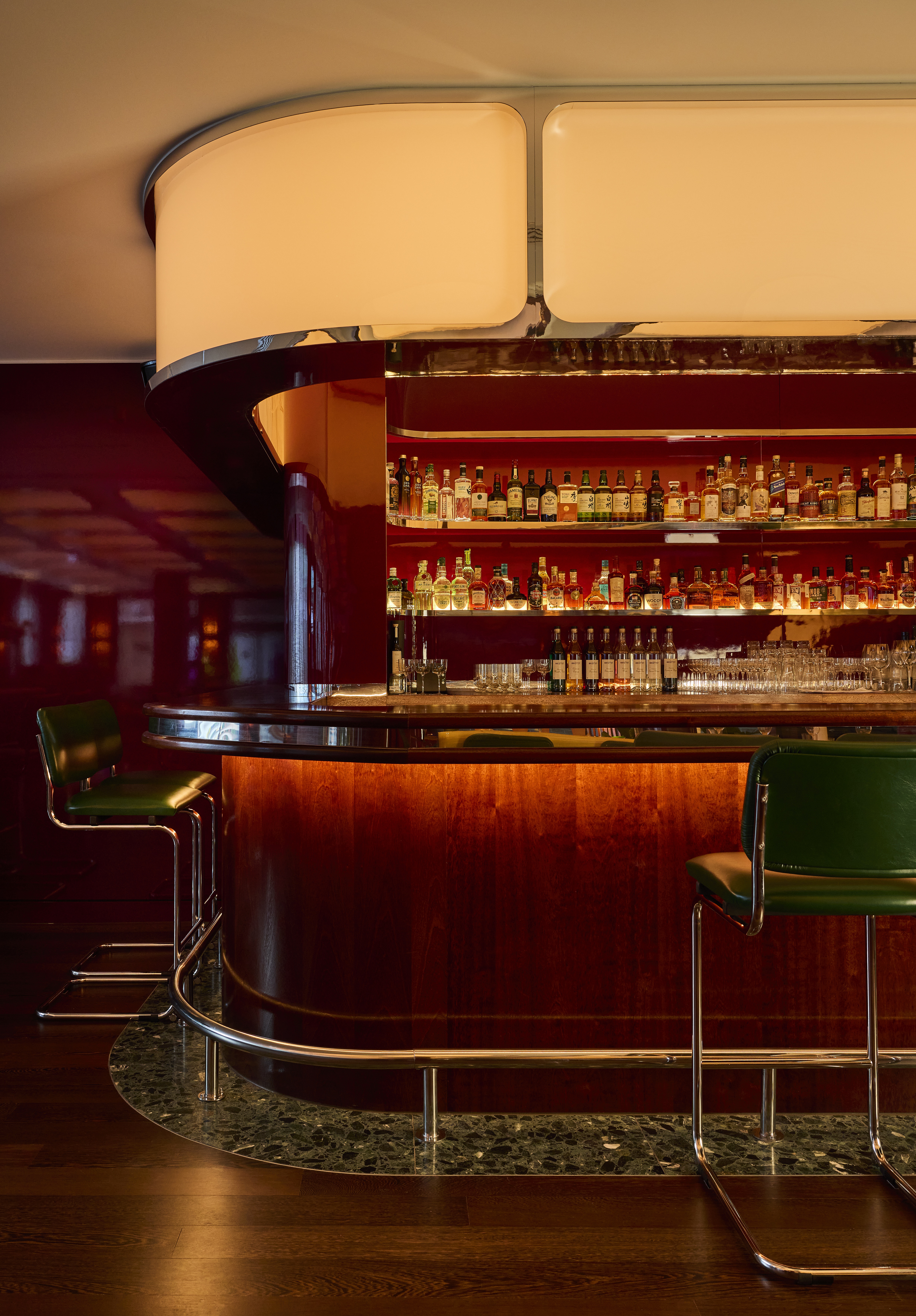
We're seeing Streamline Moderne a lot in hospitality spaces; "There’s a return to forms that feel sculpted, ergonomic, and optimistic, which are all qualities rooted in that era," explains interior designer Alex Kuby.
Streamline Moderne took off during the Great Depression and lasted well into the early 1940s. "It was a response to both economic realities and the exciting innovations happening in industrial design and transportation," explains interior designer Marianne Jones.
"It reflected, despite the Great Depression, an optimism of the 1930s grounded in a belief that technology, travel, and design could make life better," adds interior designer Alex Kuby, of Dyelot Interiors. People were fascinated by speed and efficiency, and that aesthetic made its way into architecture and interiors. This mindset shows in the way interiors began to flow rather than stop and start at every corner. "It's Deco without the jewelry," Alex adds.
After World War II, the style began to fade as we made way for the Mid-Century Modern aesthetic, but Streamline Moderne undoubtedly left its mark on the design world.

Marianne Jones is a California-based interior designer and the founder of Marianne Jones Interiors. Her journey to interior design began in fine art and marketing, culminating in the launch of her firm in 2010 after executing several significant residential renovations. Marianne holds countless design awards, is featured in top-tier design publications, and boasts a long roster of residential and commercial clients across the country.
The Key Characteristics of Streamline Moderne
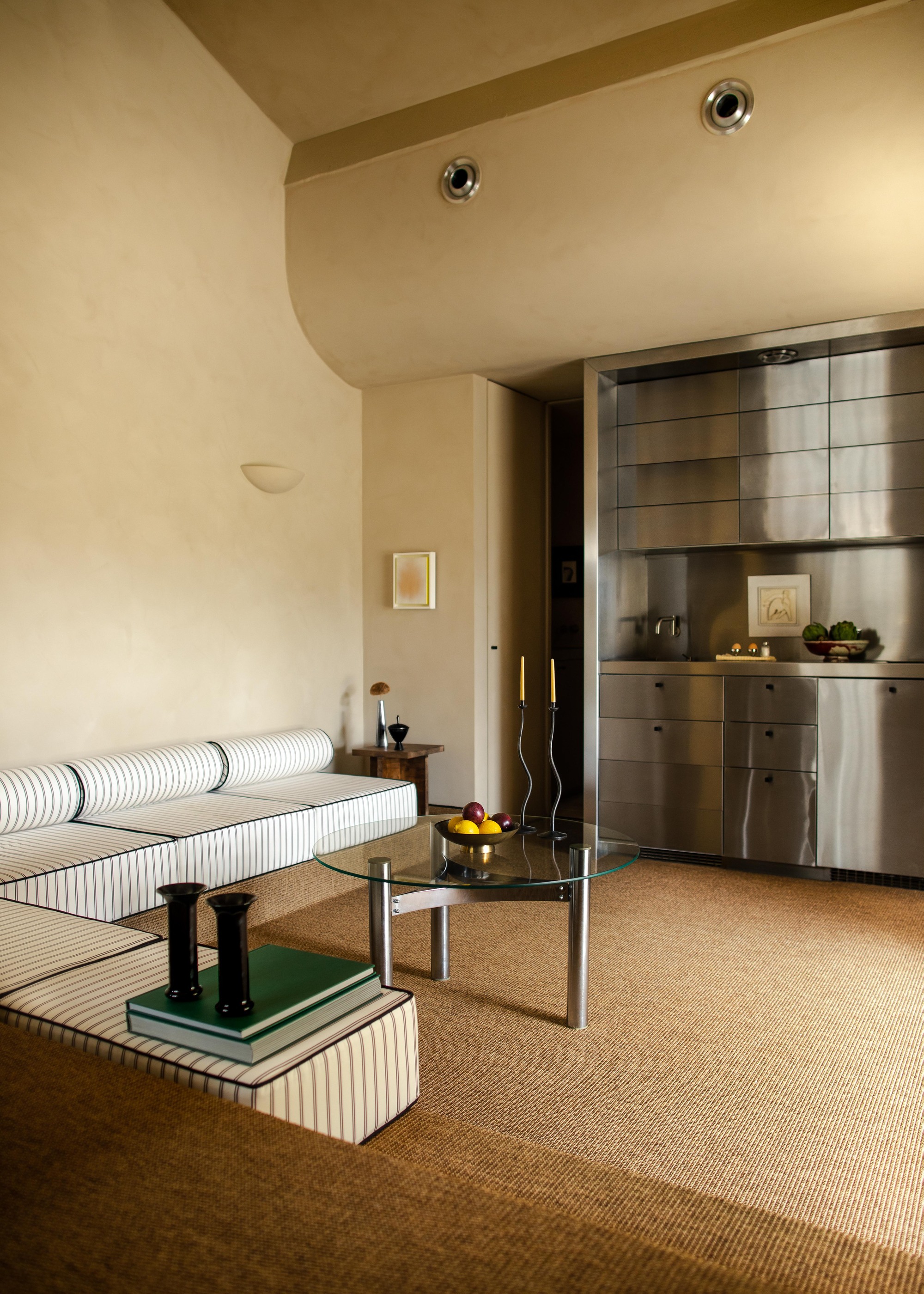
Multiple elements of this room come together for a contemporary take on the Streamline Moderne style.
One of the most prominent characteristics is the curved and horizontal forms. Instead of sharp corners, you get rounded edges and sweeping lines. "There's a real emphasis on that horizontal flow — it creates this sense of calm and continuity," says Marianne.
The Livingetc newsletters are your inside source for what’s shaping interiors now - and what’s next. Discover trend forecasts, smart style ideas, and curated shopping inspiration that brings design to life. Subscribe today and stay ahead of the curve.
Similarly, the materials are smooth and polished. Think stucco, different types of glass blocks, chrome decor, and stainless steel (all of which are showing up in today's interiors).
"Everything has this clean, almost nautical quality to it," says Marianne. "You might see porthole-style windows or railings that look like they belong on a ship."
In more contemporary spaces, you may even see "lacquered wood added for a sense of polish," adds Alex.

Alex is a licensed architect specializing in hospitality and experiential interior design, with a foundation built on years of practice across high-end hotels, branded environments, and lifestyle-driven residential spaces. His work is grounded in architectural rigor and elevated by a narrative-driven approach that shapes immersive, memorable experiences.

Terrazzo tile, curved lines, and glass bricks come together in this bathroom that feels simultaneously Streamline Moderne and completely contemporary.
When decoration does appear, it's purposeful and minimal; for instance, a horizontal band of detail or some subtle metalwork. The beauty comes from the forms themselves and the quality of the materials.
As Alex explains, "Streamline Moderne's focus on restraint in ornamentation makes it the bridge between the more geometric and glamorous Art Deco aesthetic vs mid-century modern."
The color palette tends toward neutrals — whites, creams, soft grays — with pops of color dotted in. The play of light and shadow across those curved surfaces creates its own visual interest. However, a tonal color drench technique would make a Streamline Moderne-inspired space feel more 'of the moment'.
How to Style Streamline Moderne in Contemporary Design

"We're seeing echoes of Streamline Moderne in the softened geometry of modern furniture, the curved millwork wrapping public spaces, and the integration of lighting that traces architectural forms," says Alex.
The beauty of Streamline Moderne's influence in contemporary homes is all about the restraint, says Marianna. There's a tendency towards rich, layered neutrals, horizontal lines, and an emphasis on letting the architecture breathe. The key is that nothing screams for attention. It's cohesive and calm.
For instance, "A curved sofa in a neutral fabric with a long and low furniture profile that emphasizes the horizon line. Rounded archways connecting rooms instead of traditional square doorways. A dining table with a curved pedestal base in white oak. Chrome or brass accents that catch the light without demanding attention. Terrazzo or polished concrete floors," lists Marianne. These are the details continually noticed in modern projects and interiors.
But despite the clear characteristics, the beauty of borrowing from Streamline Moderne is that it plays well with other aesthetics. The forms are so clean that they don't compete.

The stainless steel countertop and rounded sink lightly reference the nautical influence of Streamline Moderne.
Pair it with Mid-Century Modern furniture and you get an interesting dialogue between curves and angles. "Both styles share a focus on functionality and clean lines, so they work together naturally," says Alex.
"The minimalist interior design approach pairs really well with the modern architecture we're seeing in California," adds Marianne. Those curved forms complement natural textures and materials and add approachability to spaces that might otherwise feel too stark.
You can even introduce Streamline Moderne elements into more traditional spaces, too. A single chrome or lacquer piece adds just enough Streamline Moderne-style to create a stylized sense of balance.
"We're not trying to recreate 1930s interiors. We're taking the best ideas from that era — the restraint, the beautiful materials, the emphasis on form — and adapting them for how we live today," says Marianne. And when you invest in pieces and spaces that have that kind of integrity, they don't feel dated in five or ten years.
And if you love the Streamline Moderne aesthetic, you might love jumping ahead a few years to Space Age interiors. It's a deep dive into the fantastically utopian style of the late 1960s.

Olivia Wolfe is a Design Writer at Livingetc. She recently graduated from University of the Arts London, London College of Communication with a Masters Degree in Arts and Lifestyle Journalism. In her previous experience, she has worked with multiple multimedia publications in both London and the United States covering a range of culture-related topics, with an expertise in art and design. At the weekends she can be found working on her oil paintings, reading, or antique shopping at one of London's many vintage markets.
